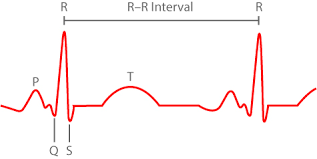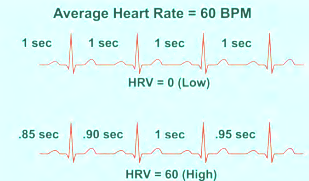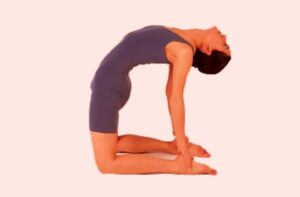 Modern yoga research is heavily directed towards the use of smartphones and wearable sensor devices for stress control. Yoga apps and yoga wearable sensor devices are in the market. Modern yogis are more interested to know the effect of yoga poses for stress management on real time basis. Wearable sensor devices are now ready to provide you that information. Current yoga researches are more focused on individuals for data-driven yoga poses on real time basis. Statistics are generated for the specific person who is doing the yoga practices. Improvements and alerts are generated as you practice your yoga poses. In this article I discuss how wearable sensor devices are effective for stress monitoring. Data-driven yoga postures gives us constant feedback to measure the impact of yoga postures on moment to moment basis.
Modern yoga research is heavily directed towards the use of smartphones and wearable sensor devices for stress control. Yoga apps and yoga wearable sensor devices are in the market. Modern yogis are more interested to know the effect of yoga poses for stress management on real time basis. Wearable sensor devices are now ready to provide you that information. Current yoga researches are more focused on individuals for data-driven yoga poses on real time basis. Statistics are generated for the specific person who is doing the yoga practices. Improvements and alerts are generated as you practice your yoga poses. In this article I discuss how wearable sensor devices are effective for stress monitoring. Data-driven yoga postures gives us constant feedback to measure the impact of yoga postures on moment to moment basis.
Stress monitoring devices
With the recent technological advancement in smartphones, micro and nanotechnologies the the landscape of healthcare, yoga and stress monitoring system is rapidly changing. Stress monitoring devices and companion software applications capable of generating early alerts. Recently, extensive research efforts have been made in the smart wearable systems (SWS) for yoga, overall health and stress monitoring. They are used to measure different parameters of the body on a moment‐to‐moment or beat‐to‐beat basis. Smart wearable sensors are also effective and reliable for preventative methods in many different facets of medicine such as, cardiopulmonary, vascular, endocrine, neurological function and rehabilitation medicine. There are more than 1,000 stress related apps in the Apple market and Google market. The wearable devices connects to smartphones via Bluetooth, and the user has an option to use any app out of several apps. Taking readings simply requires strapping the monitor on, firing up the app and relaxing for approximately 2 to 3 minutes, whilst the app records your data like heart rate, Heart Rate Variability etc.
Wearable Devices
There are many terms used for the health trackers, including electronic activity monitors, fitness trackers, wearable activity monitors, wearable sensor, mHealth, eHealth, medical sensor, body area network, body sensor networks, wearable health monitors, and wearables. These devices enable low-cost wearable, non-invasive alternatives for continuous 24-hours monitoring of health, activity, mobility, and mental status, both indoors and outdoors. Blood pressure, heart rate variability, respiratory rate, blood oxygen, body temperature, sweat analysis, step counts, yoga posture movements are the common measures. Sensors and wearables are normally integrated into various accessories such as wristband, headband, chest belts, garments, hats, socks, shoes, eyeglasses and other devices such as wristwatches, headphones and smartphones. Most sensors can either be worn or placed on clothes. Some wearable devices can be placed on the almost any part of the body: wrist, ankle, waist, chest, arm, legs, etc. There are sensors that can detect many different variables such as movements, speed, distance, steps taken, floors climbed and calories burned. Some devices are used to track the way both your diaphragm and chest move in and out while you breathe and the position of your body.
Yoga Stress Tracking Variables
 There is an inherent need to monitor stress in real time over extended periods. A real-time personal stress monitor would benefit individuals by providing continuous feedback about their stress levels. Heart Rate Variability (HRV) and Electro Dermal Activity (EDA) are the two most common measures for stress tracking.
There is an inherent need to monitor stress in real time over extended periods. A real-time personal stress monitor would benefit individuals by providing continuous feedback about their stress levels. Heart Rate Variability (HRV) and Electro Dermal Activity (EDA) are the two most common measures for stress tracking.
 Measurement of Heart Rate Variability (HRV) is one of the best ways to track stress. HRV is different with heart rate (HR). HR is a number of the peaks of the arterial pulsewave within one minute. The HRV is defined by the frequency analysis of the time interval between the peaks of arterial pulsation. Heart rate variability is measured by calculating the time between R spikes on an ECG trace. The HRV represents the chronic stress level and also individual’s stress vulnerability. If you’re healthy and you inhale deeply, your heart rate will speed up; if you breathe out deeply, the opposite will occur. Within the limit, generally a higher heart rate variability (HRV) suggests a relaxed, low-stress physiological milieu, while a lower HRV indicates a need for recovery, rest, and sleep.
Measurement of Heart Rate Variability (HRV) is one of the best ways to track stress. HRV is different with heart rate (HR). HR is a number of the peaks of the arterial pulsewave within one minute. The HRV is defined by the frequency analysis of the time interval between the peaks of arterial pulsation. Heart rate variability is measured by calculating the time between R spikes on an ECG trace. The HRV represents the chronic stress level and also individual’s stress vulnerability. If you’re healthy and you inhale deeply, your heart rate will speed up; if you breathe out deeply, the opposite will occur. Within the limit, generally a higher heart rate variability (HRV) suggests a relaxed, low-stress physiological milieu, while a lower HRV indicates a need for recovery, rest, and sleep.
 These rapid changes occur mainly due to the influence of the parasympathetic nervous system (PNS). There are many HRV tracking apps which are available for both iPhone and Android devices. Research evidence increasingly links high HRV to good health and a high level of fitness, whilst decreased HRV is linked to stress, fatigue and even burnout. Stress activates the sympathetic nervous system, deactivating the parasympathetic nervous system and creating an imbalance. Normally, yoga practice decreases sympathetic activity and causes a shift in the autonomic balance towards parasympathetic dominance indicating a reduction in stress.
These rapid changes occur mainly due to the influence of the parasympathetic nervous system (PNS). There are many HRV tracking apps which are available for both iPhone and Android devices. Research evidence increasingly links high HRV to good health and a high level of fitness, whilst decreased HRV is linked to stress, fatigue and even burnout. Stress activates the sympathetic nervous system, deactivating the parasympathetic nervous system and creating an imbalance. Normally, yoga practice decreases sympathetic activity and causes a shift in the autonomic balance towards parasympathetic dominance indicating a reduction in stress.
Electrodermal activity (EDA) is the term used for defining autonomic changes in the electrical properties of the skin. The most common property is the skin conductance. EDA is highly responsive to emotions in some people. Fear, anger, startled response, orienting response are among the reactions that may be reflected in EDA. Skin conductance is known to be correlated with an individual’s emotional state. The traditional theory of EDA holds that skin resistance varies with the state of sweat glands in the skin. Sweating is controlled by the sympathetic nervous system.
Keeping Stress Under Control
 You can maximize your health by minimizing stress. Stress that is not kept under control check can aggravate other health problems, and while it is not entirely avoidable, it is manageable. By measuring and tracking various parameters by sensor devices you can use the data to make the right choices in your yoga practice and day to day life. The idea is quite simple. For example, you can monitor your HRV in every yoga training. If your HRV drops significantly, take this as an early warning that you are overloading the yoga pose. A small drop is OK as long as you recover.
You can maximize your health by minimizing stress. Stress that is not kept under control check can aggravate other health problems, and while it is not entirely avoidable, it is manageable. By measuring and tracking various parameters by sensor devices you can use the data to make the right choices in your yoga practice and day to day life. The idea is quite simple. For example, you can monitor your HRV in every yoga training. If your HRV drops significantly, take this as an early warning that you are overloading the yoga pose. A small drop is OK as long as you recover.
Conclusion:
This article has aimed to contribute to the discussion in this new Yoga Research Forum on digital yoga for stress control. As more and more health-tracking devices and apps designed for use in yoga and stress control become available the wider development of data-driven yoga poses in which data tracking, sensing and analysis, facilitated by software and data analytics algorithms, will increasingly influence and shape the future yoga practices. The trend of the current research on yoga is changing drastically. It is shifting from the decade old fMRI image analysis to apps design and wearable sensor design for yoga, which will give direct benefits to the users.
References:
1. Remote Measurement of Cognitive Stress via Heart Rate Variability
2. Stress Recognition using Wearable Sensors and Mobile Phones
3. Influence of Mental Stress on Heart Rate and Heart Rate Variability